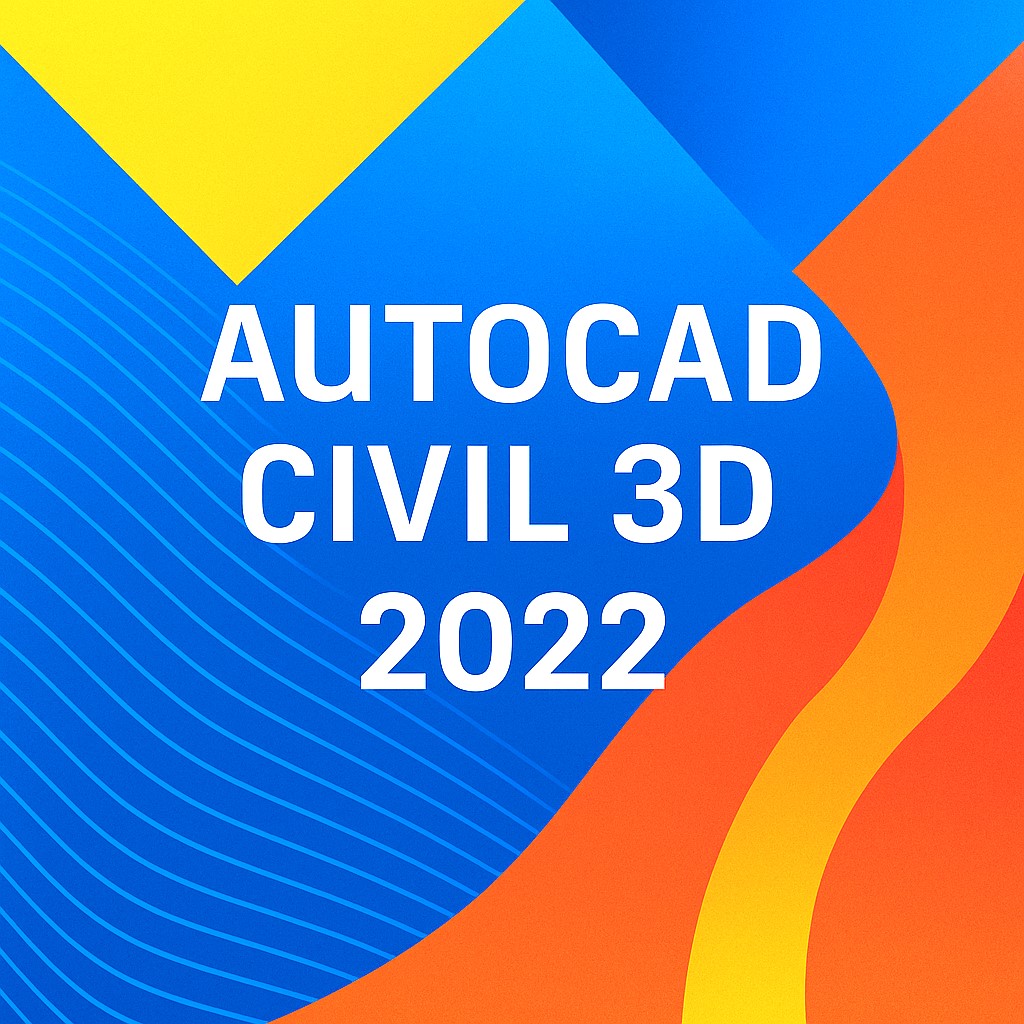AutoCad Civil 3D Review
Friends, for powerful and effective software for civil engineering projects, welcome you to click on the image or click here button below. Thanks For Your Support.

Income Disclosure – I am an Amazon Associate, I earn commissions when you buy products after clicking on the image or “click here” button within 24 hours.
AutoCAD Civil 3D has become one of the most widely used civil engineering design and documentation tools in the industry. Built on top of AutoCAD, this advanced software provides a dynamic, model-based environment that connects design and documentation. In this review, we take an in-depth look at the features, performance, benefits, and potential drawbacks of AutoCAD Civil 3D, specifically focusing on the 2022 version.
What Is AutoCAD Civil 3D?
AutoCAD Civil 3D is a civil infrastructure design software used by civil engineers, designers, and drafters to plan, design, and deliver infrastructure projects. It is specifically tailored for civil engineering work, including transportation, land development, water systems, and more.
The software integrates surveying, design, analysis, and documentation into a unified workflow, improving productivity and reducing errors caused by manual updates.
Key Features of AutoCAD Civil 3D
1. Dynamic Model-Based Design
One of Civil 3D’s standout features is its model-based design environment. This dynamic system allows any changes made to a model—such as adjustments to alignments or elevations—to automatically update across related sheets and documentation. This ensures consistency and reduces rework.
2. Alignment and Profile Tools
Civil 3D provides powerful tools for creating road alignments and profiles. Designers can build horizontal and vertical alignments with precision, and the built-in profiles help visualize elevation changes, making it easier to design roads, pipelines, or channels.
3. Corridor Modeling
Corridor modeling is a critical feature in Civil 3D. It helps users build complex linear infrastructure such as highways, railways, and tunnels. Designers can define assembly components like lanes, medians, and curbs, then model them along the alignment with varying parameters.
4. Grading and Surface Creation
The software includes robust grading tools and the ability to create TIN (Triangulated Irregular Network) surfaces. These surfaces can represent existing ground or design elevations. Grading tools make it simple to design building pads, detention basins, or slope transitions.
5. Pipe Networks and Pressure Systems
Civil 3D supports both gravity-based and pressure pipe networks. Engineers can design sanitary sewers, storm drains, and water distribution systems with ease. The pipe rules and part catalogs help maintain standards and ensure proper sizing.
6. Quantity Takeoffs and Earthwork Calculations
With the volume tools in Civil 3D, users can calculate cut and fill volumes based on surface comparisons. This feature is vital for project planning, budgeting, and bidding. It eliminates the need for manual volume calculations.
7. Integration with GIS and Other Tools
Civil 3D supports importing GIS data, satellite imagery, and aerial photos. It also integrates well with other Autodesk products like InfraWorks and Revit, allowing for smoother data sharing across different stages of the project lifecycle.
What’s New in AutoCAD Civil 3D 2022?
The 2022 version introduced several performance enhancements and new capabilities that aimed to improve workflow efficiency.
Performance Improvements
Civil 3D 2022 significantly improved performance in drawing operations and the handling of large data sets. Operations like surface rebuilds, corridor processing, and pipe network layout became faster and more responsive.
Connected Alignments Enhancements
In version 2022, Autodesk enhanced connected alignments to support curved offset profiles. This helped simplify complex intersection and ramp designs, making them more flexible and intuitive.
Pressure Network Layout Improvements
Users can now snap fittings and appurtenances more easily and have better control over vertical layout adjustments. These refinements made pressure pipe design more accurate and less frustrating.
Project Explorer Integration
Civil 3D 2022 brought tighter integration with Project Explorer—a powerful tool that provides an interactive interface for reviewing and editing design data. This integration helped streamline model auditing and reporting.
Benefits of Using AutoCAD Civil 3D
Enhanced Collaboration
Because the design is model-based, multiple team members can work on the same project while sharing data references. This allows for better coordination and minimizes design conflicts.
Reduced Rework
Dynamic updates across components mean that once a design element changes, all related parts and documents adjust accordingly. This minimizes errors and reduces the time needed to manually update drawings.
Improved Accuracy and Standards
Civil 3D enforces drafting standards and enables users to define templates and styles. These features help maintain consistency across projects and ensure regulatory compliance.
Support for BIM Workflows
Civil 3D supports Building Information Modeling (BIM) practices. This is particularly useful for infrastructure projects that require detailed coordination between architects, engineers, and contractors.
Challenges and Learning Curve
While AutoCAD Civil 3D is a powerful tool, it comes with a steep learning curve. Engineers new to the platform may find the vast number of tools overwhelming at first.
Complex User Interface
The interface is packed with tool palettes, ribbons, and contextual menus. Navigating these efficiently requires some experience and training.
Requires Powerful Hardware
Running large Civil 3D files with complex surfaces and corridor models demands a high-performance computer. Users with basic hardware may experience slow performance.
Licensing Cost
Civil 3D is a premium product with a substantial cost. Small firms or individual consultants may find the licensing fees difficult to justify without a solid ROI.
Who Should Use AutoCAD Civil 3D?
AutoCAD Civil 3D is ideal for civil engineers, infrastructure designers, and surveyors who need to create detailed, accurate plans for roads, land developments, drainage systems, and utility networks.
It’s particularly beneficial for:
-
Road and highway design firms
-
Land development and site planning consultants
-
Municipal water and sewer planners
-
Surveying companies
-
Government infrastructure agencies
Tips for Getting Started
If you’re new to AutoCAD Civil 3D, here are some best practices to help you get started efficiently:
-
Take Online Courses or Certification Programs – Many platforms offer Civil 3D-specific training modules.
-
Start with Templates and Styles – Use pre-built templates to maintain standardization across projects.
-
Use Data Shortcuts – These help in managing and referencing large design files between team members.
-
Leverage Autodesk Community Forums – The forums are filled with experts willing to help troubleshoot and share tips.
-
Experiment with Small Projects – Try out different tools in smaller projects to build confidence before moving to larger, more complex ones.
Final Verdict
AutoCAD Civil 3D remains a top choice in civil infrastructure design. The 2022 version added several refinements that improved speed, design accuracy, and integration with other Autodesk tools.
Its dynamic design model and comprehensive set of features make it a valuable asset for firms handling complex infrastructure projects. Despite the learning curve and hardware requirements, the investment in time and resources is worthwhile for the long-term benefits it offers.
For professionals and organizations seeking advanced capabilities in civil design, AutoCAD Civil 3D is a tool that delivers results when used to its full potential.
Key Takeaways
-
AutoCAD Civil 3D is a powerful civil engineering software used for infrastructure design and documentation.
-
Version 2022 introduced enhanced performance, better pressure network tools, and deeper integration with Project Explorer.
-
Ideal for large-scale infrastructure projects, it enables a dynamic, model-based workflow that reduces errors and boosts collaboration.
-
Requires training and high-end hardware, but offers long-term value in terms of productivity and accuracy.
-
Highly recommended for civil engineers, surveyors, and designers focused on roads, land, drainage, and utility networks.
References
https://en.wikipedia.org/wiki/AutoCAD
https://en.wikipedia.org/wiki/Software
Links License – https://en.wikipedia.org/wiki/Wikipedia:Text_of_the_Creative_Commons_Attribution-ShareAlike_4.0_International_License
Dear Friends, warmly welcome you to discover more tech products and software from my blog archive link below.
https://techsavvo.com/category/tech-products/
Thanks For Reading This Post On “AutoCad Civil 3D Review”.


